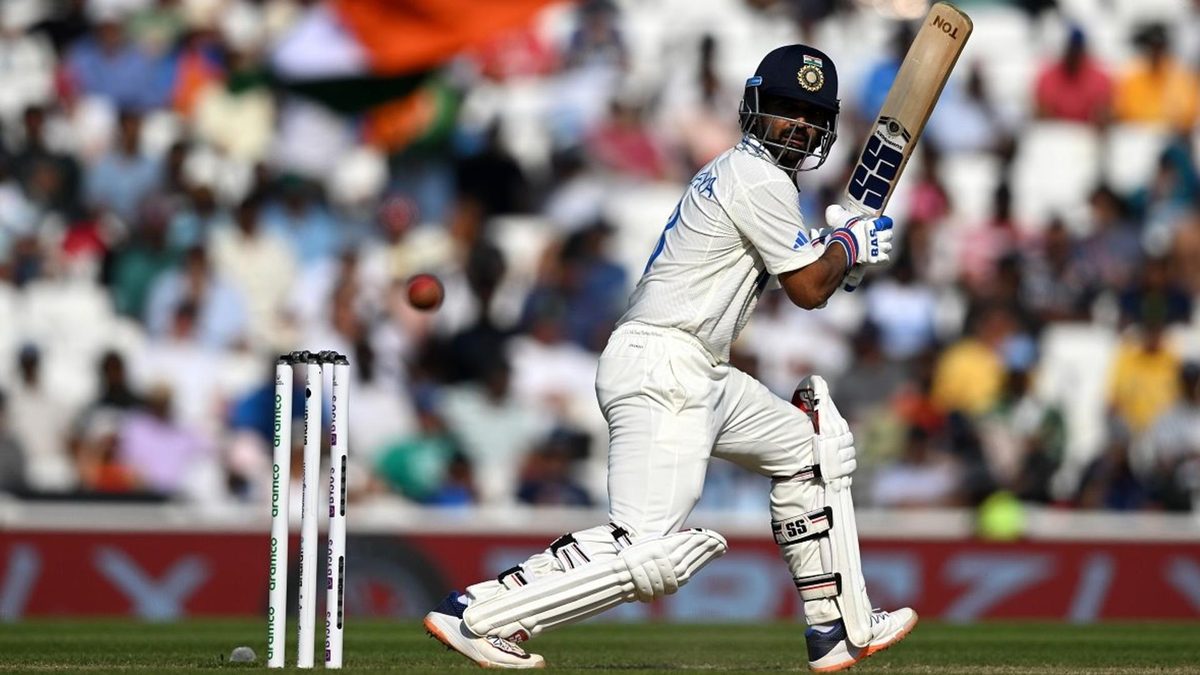
India’s appointment of Ajinkya Rahane as vice-captain has thrown up some questions, but it has also provided a glimpse into the short-term future.
There are typically seven batters an India Test squad, whom the selectors pick from a pool of approximately twice the count. This invariably involves some marginal cases, resulting in heated debates at every level of the Indian cricket fraternity.
It has been a saga as old as India’s foray into Test cricket. This time, they retained captain Rohit Sharma; elevated Ajinkya Rahane to vice-captain; retained Virat Kohli and Shubman Gill and, as a just-in-case option, Ishan Kishan; called up the uncapped Ruturaj Gaikwad and Yashasvi Jaiswal; and left out Cheteshwar Pujara.
Most of these decisions – if not all of them – have caused a stir at some level. Over the past 12 months, no Indian has scored more Test runs than Pujara. Gaikwad’s first-class average of 42.19 is barely more than half of the yet-again-overlooked Sarfaraz Khan’s 79.65.
One of those curious batters who have a better Test record away (3,442 runs at 40.73) than at home (1,644 runs at 35.73), Rahane was an easy fit as Virat Kohli’s deputy in the Test side.
He stepped up when Kohli missed a Test match – most significantly on India’s 2020/21 tour of Australia – when India came back from one-down to seal a historic triumph despite having to field 20 cricketers in four matches, a world record for any team away from home.
Rahane led the revival with a typical hundred at Melbourne against a very strong attack. Yet, that hundred, while special, was part of a barren run that led to his axing from the Test side altogether in early 2022.
Between the pandemic and getting dropped, Rahane had made 728 runs at 24.26 – the lowest average for anyone in the world who had batted 30 times in Test cricket over the period.
The next winter, he made 884 runs at 58.93 in the Indian season – impressive, but not exceptional by the standards of Indian domestic cricket. If anything, the numbers were boosted by an unbeaten 207 against Duleep Trophy debutants North East Zone.
But when Shreyas Iyer and KL Rahul were ruled out of World Test Championship final against Australia, the selectors recalled Rahane. Even if one dismisses his outstanding performance in IPL 2023 (326 runs, strike rate 172) for the format, there was little doubt over his form. And since this was a one-off match and not a long-term investment, the selectors perhaps backed on Rahane’s experience.
India lost the Test match, but Rahane made 89 and 46. His 135 runs were more than the contributions by any two of his teammates put together. He had grabbed BCCI’s one-off non-investment with both hands, for surely you could not drop a player after that?
But if Rahane’s inclusion raised some eyebrows, it was nothing in comparison to the response to him being elevated to vice-captain. There was a predictable call for transition in the aftermath of India’s defeat in the final. Leaving out Pujara and picking Jaiswal and Gaikwad pointed to that direction.
Appointing the 35-year-old Rahane as the 36-year-old Rohit’s deputy, thus, seemed counterintuitive. Yet, one can see the rationale.
For someone who finds no mention in the Laws of Cricket or in official scorecards, the vice-captain plays a key role. The role is manifold, including – but not restricted to – stepping in during matches or for full matches as captain, and taking decisions as part of the team management.
Having played much of their cricket together, for Mumbai and India, Rahane and Rohit have formed a rapport over the years. When Rahane led India to the 2020/21 series win in Australia, Rohit was vice-captain for the last two Test matches. The roles will merely be switched this time.
At 36, Rohit is not getting any younger, and has skipped international cricket in the past. The ideal Test vice-captain should be a guaranteed starter, a criterion only three Indians below 30 – Jasprit Bumrah, Shreyas Iyer, and Rishabh Pant – fulfill, and neither is likely to return to Test cricket anytime soon.
That left the selectors with Shubman Gill. A phenomenal talent, Gill was identified as future captain at 20, when he led India A against South Africa A in an unofficial ‘Test’ in Thiruvananthapuram. Four months later, in 2019/20, he led India A on their tour of New Zealand.
Curiously, he has not led at any level since. There have been conversations around him being considered as part of ‘leadership groups’ at the Kolkata Knight Riders and the Gujarat Titans, but he never led them. When Gujarat captains Hardik Pandya missed matches due to injuries, Rashid Khan led them instead.
Gill, thus, is perhaps not in the reckoning at this point. If Virat Kohli is not interested in a second innings, Rahane, with his impressive CV, emerged as Rohit’s obvious deputy and even successor for the interim period until a long-term captain is identified.
It will be a throwback to 2007, when the selectors had appointed MS Dhoni as captain as limited-overs captain but wanted to wait before assigning him the responsibility in Test cricket. They had opted for 37-year-old Anil Kumble.








